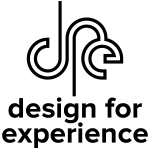In an article published yesterday, Wayne Neale interviewed the experience design leads at Groupon, Ebay, and Lumension.
When asked about the role UX plays at Groupon, Vice President of Global Design Peter Merholz, said: “We don’t call it ‘UX’—it’s design. We recognize that ‘UX’ is everyone’s responsibility, not just designers’.”
Merholz spoke to this same ideal in his presentation at UX Week 2012, “UX is Strategy; Not Design.” He posits that, “User experience arises from the sum total of interactions with an organization’s products and services.”
User and customer experience are strategic values that go to the heart of successful companies. Winning UX is not a low-level tactical practice or a disconnected team within a company. User and customer experience initiatives thrive when embraced at every level—by executive leadership, design and engineering teams, and the rest of the staff. The DfE Adoption of Experience Strategy award recognizes companies that have embraced experience-orientation as a strategy.
If you know of companies or institutions that have made a point of putting “UX” into every aspect of their operations, nominate them. If you think that your company deserves DfE recognition, apply for this award right now!
Image of sprouts courtesy Shutterstock








